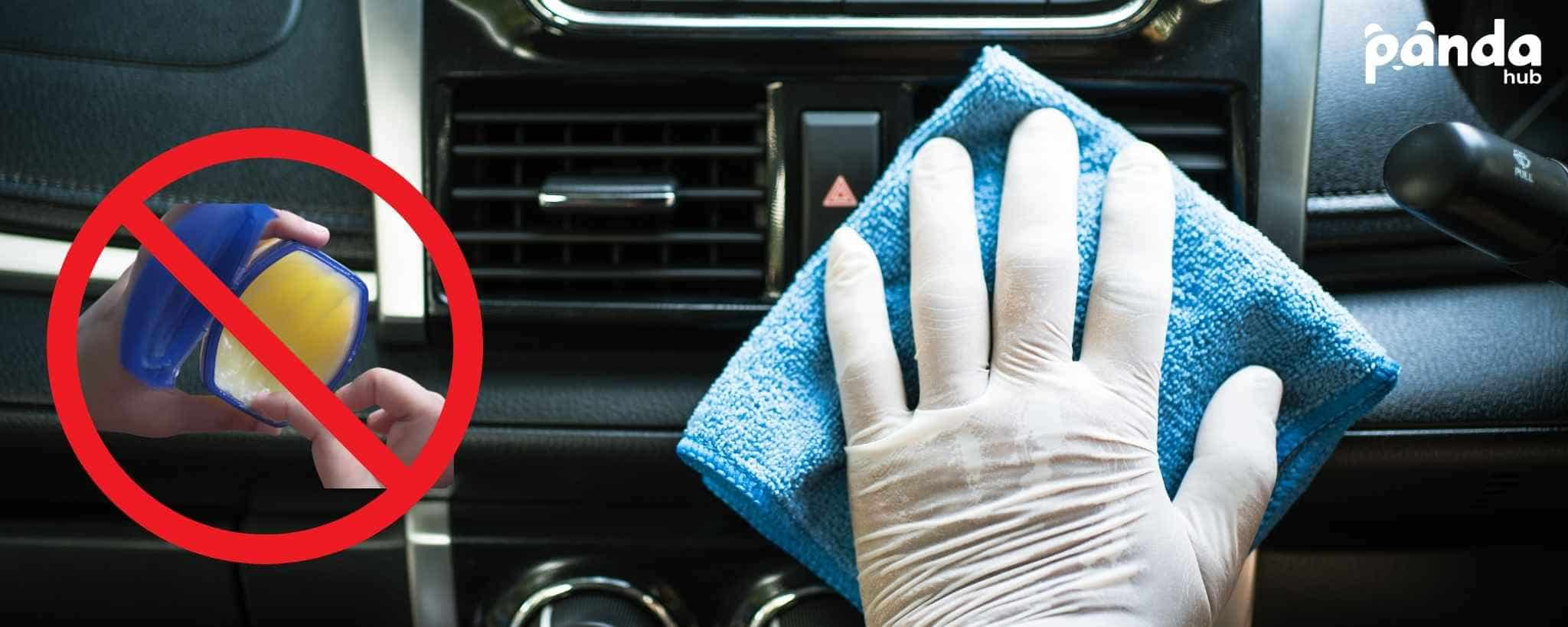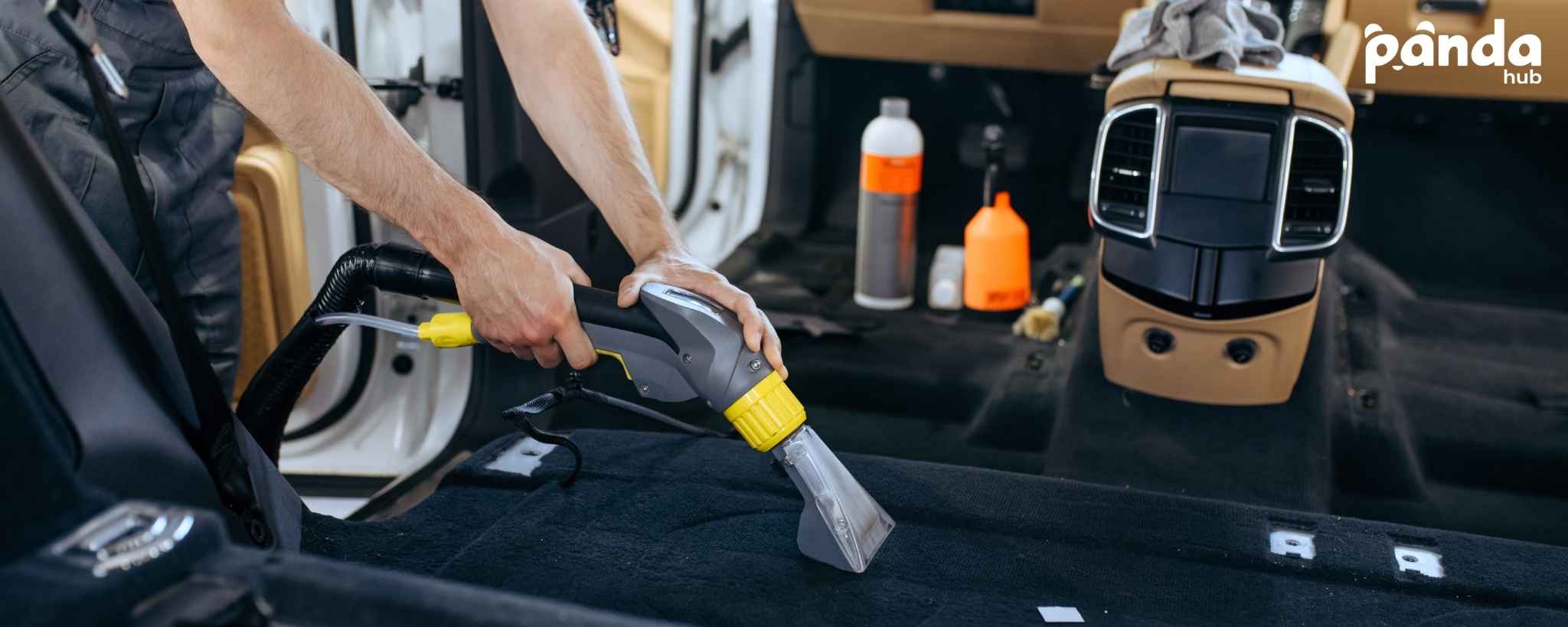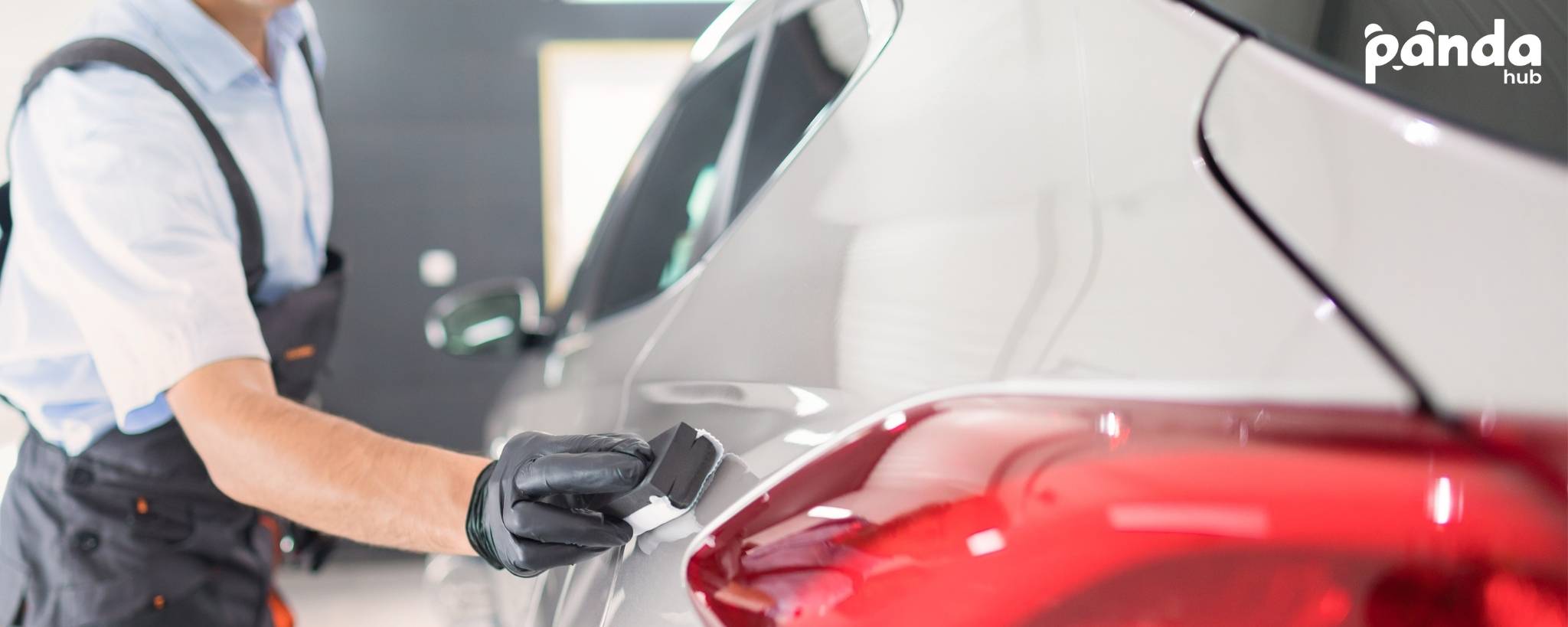Water spots are the small whitish stains of water droplets that evaporate and leave behind mineral deposits such as calcium and magnesium that engrave into your car’s paint.
If you own a car, you might have seen water spots thousands of times. The annoying blemish in the car leaves many asking what causes water spots on car. There are different causes of water stains on cars like rain spots, sprinkler systems, and washing with hard water.
Among all, hard water, which contains high levels of minerals like calcium and magnesium is the main culprit of water spots. When these minerals dry on your car’s paint, they leave behind deposits that can etch into the surface, leading to stubborn water spots.
Essential Tools and Materials
Before you dive into the steps of buffing out water stains from your car, it’s important to have the right tools.
Get ready with basic, readily available equipment such as:
- Clean microfiber cloths
- Buckets, one for clean clothes, one to rinse used clothes
- pH neutral car shampoo
- White vinegar
- Clay bar
Steps to Remove Water Spots From Car
Prepare Your Car for Cleaning
1. Move your car away from direct sunlight and park it in some shaded areas as the sun can cause cleaning products to dry quickly.
If you are washing a car in extremely hot weather condition, wash it panel by panel, drying it after every section.
Washing your car in sunlight or very hot weather can lead to an increase in water stains.
Rinse your car thoroughly to remove any loose dirt or debris that could scratch the paint during the cleaning process.
Basic Wash and Dry
If you have light water spots, just a simple wash should work.
Consider using a high-quality car shampoo with a soft glove, and cover all the affected areas.
Next, rinse thoroughly and dry your car with a soft microfiber towel to gently dry the surface and prevent new spots from forming.
Vinegar and Water Solution
Vinegar is made from acetic acid and is a proven and powerful cleaning agent.
- Mix equal parts of water and vinegar in a spray bottle and apply the solution to the spots.
- Let it sit for a few minutes and wipe it away with a clean and soft cloth.
- Finally, rinse and dry the car thoroughly.
The natural acidity in vinegar breaks down the minerals that cause the water spots without damaging the paint and offers a safe and cost-effective method to keep a car’s surface clean and spot-free.
Is Vinegar Safe in Car Paint?
Using a Clay Bar: Most Effective Solution
Clay Bar is designed to remove stubborn contaminants from your car’s paint, including hard water spots.
- Spray a clay bar lubricant or detailing spray onto the water spots.
- Gently rub the clay bar in a back-and-forth motion over the affected area.
- Wipe away the residue with a microfiber towel and inspect the surface.
Clay bar treatment is one of the most effective methods to get rid of car water spots.
Applying Water Spot Removers
For removing stubborn car water spots, a specialized water spot remover can save your day.
Apply the product to a soft microfiber cloth, let it sit for a few minutes, and gently rub it in the affected areas.
Make sure to follow the manufacturer’s instructions, and test on a small area first to ensure compatibility with your car’s paint.
How to Prevent Future Water Spots
Prevention is always better than cure! And for water spots prevention is easier than removing them.
To prevent water spots,
- Always dry your car immediately after washing it with a clean microfiber towel or chamois, and avoid washing your car in direct sunlight.
- Consider applying a quality wax or a sealant to protect the paint and make it harder for water stains to form in the future.
- Avoid parking under trees, near sprinklers, or in direct sunlight, especially after a rainstorm.
It is very important for you to regularly maintain your car to reduce the risk of water spots reappearing.
If you frequently find water spots after washing your car, consider researching the water type available to your household.
You Might Also Be Interested In: How to Wash Microfiber Towels
Types of Water Spots
While all the water spots may look similar from naked eyes, there are different types of water spots. Determining these will help you to choose the best method of removing them:
Type 1: Mineral Deposits
Mineral deposits are the most common type of water spot caused by hard water. They sit on the surface and can often be wiped away with the right technique.
Type 2: Etched Spots
Occur when water dries under heat or sunlight, causing minerals to etch into the clear coat. These require more advanced methods for removal.
Type 3: Bonded Contaminants
Water spots that combine with dirt, dust, or pollutants, create stubborn marks that need thorough cleaning.
When to Seek Help from Professionals
While light water spots can be removed with DIY methods, there are times when professional help may be needed.
If water spots have etched deeply into your car’s clear coat or paint, or if they cover a large area that’s difficult to address on your own, it may be time to seek professional help.
Experts have the tools and techniques, such as machine polishing to safely restore your car’s finish without causing further damage. Additionally, professionals can apply protective coatings like ceramic sealants to prevent future water spots and maintain your car’s shine.
{{cta-banner}}
Water Spot Removal FAQs
How Often Should You Treat Your Car for Water Spots?
The frequency of water spot treatment depends on a variety of factors, such as your location, water quality, and environmental exposure. A general rule of thumb is to check your car for water spots during your regular washing routine.
Can Water Spots Cause Permanent Damage to Car Paint?
Yes, if not addressed promptly, water spots can cause permanent damage to your car's paintwork.
The minerals in water can etch into the surface, leaving marks that are difficult to remove.
Regular treatment and preventive measures, such as using quality car wash products and waxing, can keep your car paint protected.
How Do You Get Hard Water Spots Off a Car Windscreen?
To remove hard water stains from a car windshield, mix an equal amount of vinegar and water, spray it on the water stains, and let it sit for a few minutes.
Wipe it with a clean microfiber cloth to gently scrub the surface, and clean it with a high-quality glass cleaner.
You can also use a clay bar lubricant to remove stubborn water marks.








.jpg)


